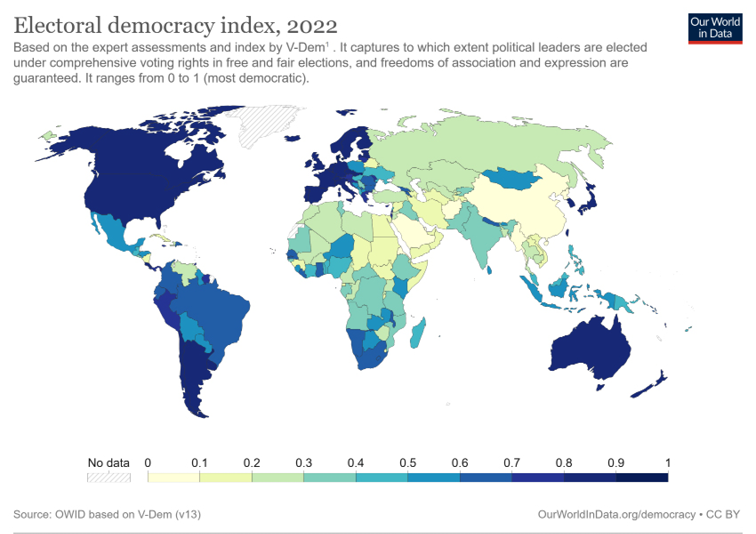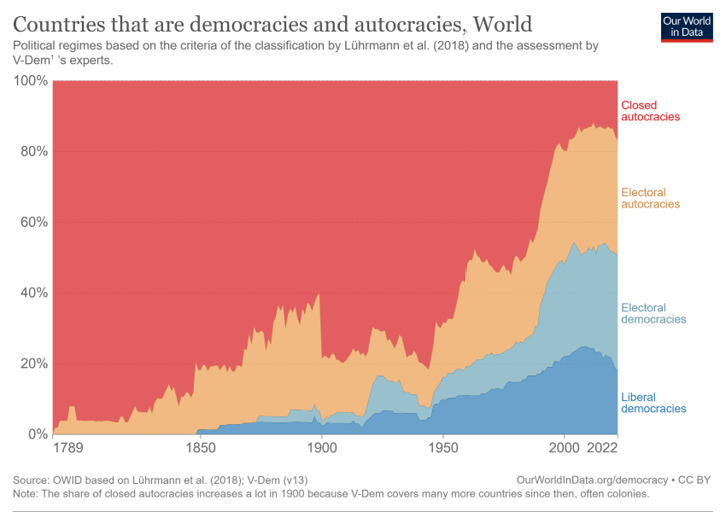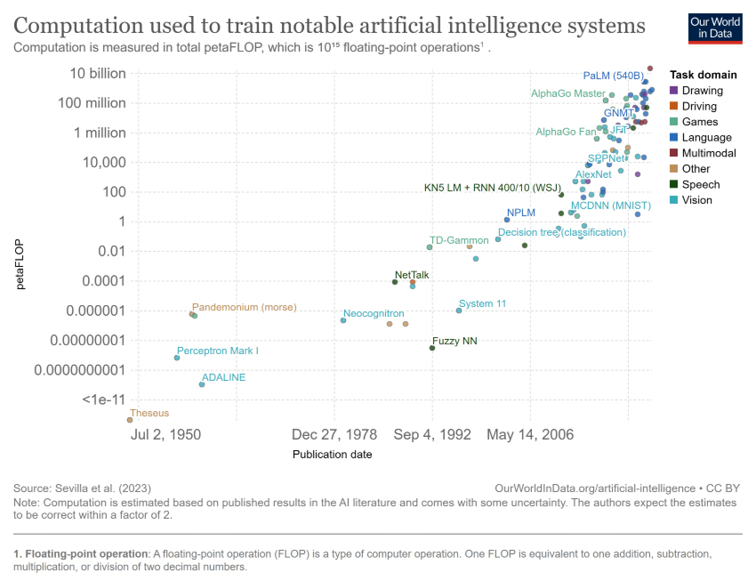Hello Visitor! Log In
Creative Solutions for Human Security
ARTICLE | August 1, 2023 | BY Aleksander Zidanšek, Ivo Šlaus, Uroš Cvelbar
Author(s)
Aleksander Zidanšek
Ivo Šlaus
Uroš Cvelbar
Abstract
As global threats to human security have expanded significantly in recent years, the reasons and opportunities for innovative technological and educational solutions are more abundant than ever in modern human history. In addition to significant environmental, social, and economic threats to sustainability, the COVID-19 epidemic depleted both health issues and economic situations due to the incompetent response of national and international authorities, which caused the economic crisis and rising poverty worldwide. With the world not yet having completely recovered from the epidemic, the war started in Europe with the Russian aggression on neighbouring Ukraine in an attempt to steal by force a large part of the territory of a neighbouring country in grave violation of international law. Despite such a serious international situation, the potential for technological and educational innovations for addressing human security is correspondingly rising. Global peace is the most important precondition for human security. We present innovative opportunities for establishing global peace and discouraging other dictatorships from potential aggressions against their neighbours. Likewise, opportunities for building peaceful, crime-free communities are presented. Human health is the next most important precondition for human security. Opportunities for creative solutions addressing potential future epidemics, and for innovative curing of the worst contemporary diseases are addressed. Innovative opportunities for improving environmental, social, and economic pillars of sustainability are also addressed. Among these opportunities, scientific research and education are the most promising areas of intervention for addressing human security needs and threats. Guidelines for the optimal use of these innovative solutions are also presented.
We start this article with an overview of the most serious threats to human security, including the serious issue of armed conflicts in the contemporary world. We continue with the analysis of their root causes, which is focused on the search for opportunities for the maximum possible leverage toward the solutions to convert conflicts into cooperation.
On the one hand, these opportunities include creative ways for the resolution of conflicts, which have the largest potential to create an empowering and peaceful future for all participants in current conflicts.
On the other hand, creative solutions include creation of a culture of peace and taking advantage of the technological opportunities of today and tomorrow.
1. The World in Conflict
In spite of the feeling that the modern 21st century world should be civilised enough to end all armed conflicts, this is clearly not the case. At the moment, the UN lists 43 active armed conflicts around the world, among which the Russian aggression in Ukraine is the deadliest, with at least 30,000 lives lost in 2022 and possibly even about 200,000. This is currently also the only war between two countries that took more than 100 lives in 2022. All other conflicts with at least 100 lives lost have only been internal conflicts like civil wars, insurgencies, rebellions, and drug wars.*
Nevertheless, the number of lost lives due to armed conflicts has been on average steadily decreasing since World War II. Our World in Data has collected statistics of deaths during conflicts among the countries worldwide (Fig. 1). The first two major peaks describe the Cold War proxy wars between North and South Korea, with the participation of China and the Soviet Union on one side and the United States on the other side, which ended in 1953. The second major peak belongs mainly to the wars in Indochina, primarily between North and South Vietnam, in which the United States was also actively involved, following Kennedy’s and Johnson’s escalations in the 1960s.
The third major peak in the 1980s was different as it was due to a multitude of different unrelated conflicts, of which the war between Iraq and Iran and the Soviet invasion of Afghanistan were the deadliest. After these two wars ended, the number of casualties decreased significantly.
When it appeared that the armed conflicts had vanished, there was the attack on the World Trade Center on 9/11 in 2001, which was followed by further violence and wars in Afghanistan and Iraq. The long-term average statistics still showed an improvement. However, the situation significantly deteriorated in 2011 with the new wars in Libya and Syria, in addition to the wars in Iraq and Afghanistan. Although the situation has been improving in recent years, the current Russian aggression against Ukraine might surpass the largest number of lives lost in the past three decades unless it stops soon.
Somehow, it appears that peace was winning in the second half of the 20th century, with certain challenges in its last decade, like the wars in Yugoslavia and Rwanda. The deteriorating state of global peace in the 21st century still makes armed conflicts the gravest threat to human security, although they are not the only ones. Violent threats are the worst, including criminals on the streets, terrorism, and states with dictatorships. Non-violent threats include economic threats, epidemics and other threats to health, and threats to the local and global environment.
(Source: https://ourworldindata.org/war-and-peace, CC BY)
.png)
2. 20th Century: Peace was Winning
Fig. 1 clearly shows that the long-term average number of deaths in state-based conflicts has been decreasing since World War II. Until about 1999, there were a few spikes in violence, and the subsequent ones were consecutively smaller. The United Nations was far from perfect, but it managed to keep peace much better than its predecessor, the League of Nations. After each major 20th century conflict was resolved, that part of the world became peaceful. First the Korean War was resolved, and the Republic of Korea has since evolved into a democratic country and one of the most successful economies in the world. The second major war, the Vietnam War, ended with the unification of Vietnam, which is still a one-party authoritarian state, but its economy has significantly improved in the last few decades. Major conflicts from the end of the 20th century also ended, but the underlying issues were not resolved. The Iraq-Iran war ended with peace, but the reasons behind the war were not resolved and soon afterwards, Iraq launched a war against Kuwait. Although they lost this war after a worldwide coalition liberated Kuwait, the authoritarian regime in Iraq remained in power for another 12 years. Even today, Iraq is a weak democracy, retaining 116th position in the Democracy Score 2022.† (Fig. 2) Iran is even worse and is at position 154 among 167 evaluated countries. Since this index was evaluated, the situation in Iran deteriorated even more with massive violence of the regime against its citizens following the killing of 22-year-old Mahsa Amini who was arrested and beaten by the Iranian regime on September 13, 2022, and died three days later. Massive protests followed, but the regime is still ruthless, leading to many lives being lost since.
(Source: https://ourworldindata.org/democracy, CC BY)

The other major conflict from the 1980s was the war in Afghanistan. The war started with the Soviet invasion in 1979, which ended in 1989 with the defeat of the Soviets. The war continued, with only a few brief interruptions. The Democracy Score 2020 has put Afghanistan in position 139, and in 2021 the elected president fled from the country following the retreat of the USA. Hence, the country fell back to the Taliban. Their democracy score dropped to the last place among the 167 countries observed, with the index less than one-third of the next two worst countries, Myanmar and North Korea.
3. 21st Century: War Strikes Back
Although peace seemed to be winning in the 20th century, the underlying issues with the last big wars of the 20th century were not resolved. Dormant conflicts waited for a spark to return even stronger. Already in the 1990s, there were troubling signs which led to the reversal of the positive trend of reduction in deaths. It was both the Rwandan genocide in 1994 and the Bosnian genocide that demonstrated the inefficiency of the United Nations, which was not able to do anything meaningful during the slaughter of people because of their different ethnicity, even in the presence of the UN peacekeepers.
A series of wars followed across Eurasia and Africa, which increased the number of deaths in 1999 and 2000. The situation improved until 2011, when the civil wars started in Libya and Syria with extensive external support from the United States, which actively contributed to the destabilisation of both countries. The situation worsened until 2015 and after 2016, it started to improve slightly in Syria, followed by the military defeat of the Islamic State in 2019. It seemed like the positive trend from the late 20th century had returned.
The war was, however, not defeated. It returned to full power in 2022 with the Russian aggression against its neighbour Ukraine. In addition to military casualties, there have also been massive and apparently systematic war crimes against civilians, with thousands of lives lost, and the full extent of these atrocities cannot be estimated as a significant part of Ukraine still remains occupied by the Russian aggressors and is therefore off limit to investigators of war crimes.
(Source: https://commons.wikimedia.org/wiki/File:2022_Russian_invasion_of_Ukraine.svg, CC BY,accessed on December 11, 2022)

The United Nations estimates‡ that over 10,000 civilians have been killed in the Ukraine war since it began in February 2022. However, the actual number of civilian casualties is likely much higher, as many deaths have gone unreported. Many of the aggressor soldiers and mercenaries were also among the dead. The current map of Ukraine and its occupied territories is shown in Fig. 3.
The war in Ukraine is the biggest test of the United Nations system. In theory, the situation is clear. The Russian attack on Ukraine on February 24, 2022 is clearly against the principles of the Charter of the United Nations. It also violates the 1994 Budapest Peace Treaty, where Ukraine gave up its nuclear weapons in exchange for the security guarantees of superpowers, including the Russian Federation, which guaranteed its territorial integrity. A day after the war started, the Secretary-General of the United Nations appointed Amin Awad of Sudan as Assistant Secretary-General to serve as United Nations Crisis Coordinator for Ukraine. The same week, the International Criminal Court opened an investigation into war crimes and crimes against humanity.§
In practice, the situation is not good. After many UN resolutions and clear evidence of the systematic war crimes, a portion of Ukraine is still occupied by the Russian invaders. With massive threats against individual security in Ukraine, this situation also provides a poor role model for other dictators with a desire to invade a neighbouring country. Namely, for almost a full year, there were no consequences for the aggressor. This sends a wrong signal, as crimes against humanity are allowed if the perpetrator is strong enough.
4. Root Causes of Conflicts
A detailed analysis of the contemporary threats to human security and their root causes was presented in 2020 by Paul Bellamy¶. He identified both violent threats like wars, crime and terrorism, and non-violent threats like economic, health and environmental threats. There are many factors that contribute to an increased possibility of violence.
History of past violent conflicts is very important as it leaves a historic memory of bad feelings among the population. External actors can often contribute to starting the conflict, in particular in regions that were already prone to violence due to their violent history.
Autocratic dictators are so closely connected to violent conflicts that they almost seem the necessary condition for large-scale violence. While the share of autocracies in the world was falling steadily in the second half of the 20th century, the trend reversed. Their share has been increasing in the 21st century (Fig. 4). These trends are very closely related to the trends of violence in state-based conflicts (Fig. 1); the more dictatorships, the more violence in state-based conflicts. It is, therefore, worthwhile to attempt the reversal of negative trends in the 21st century and reduce the power of autocratic dictators.
In the following section, we shall discuss opportunities to eliminate the root causes of conflicts. First, we will discuss the technological opportunities to challenge autocratic dictatorships, which could significantly reduce violence and thus contribute to human security.
Next we will explore the cultural opportunities for building peace. These are closely related to educational opportunities that allow youth a better comprehension of peace-related topics as well as stronger peace-making skills.
(Source: https://ourworldindata.org/democracy, CC BY)

5. Technological Opportunities
The incredible rise of new technologies in recent decades can be used either by dictators to strengthen their oppression or by the people to get more liberties. These trends are characterised by Moore’s law (Fig. 5).
The fast progress in information and communication technologies influenced all fields of human activities. In particular, progress in smart machines and artificial intelligence is promising to transform our civilisation more than ever before in history. This progress is well-characterised by the rise in computation used to train artificial intelligence, which is rising even faster than Moore’s law (Fig. 6). The famous AlphaGo, which beat the world champion in Go, is near the top of the graph.
The power of modern information and communication technologies has been proven successful in several countries and, for example, led to the fall of a dictator in Egypt. It has, however, been unsuccessful too many times, like in several occasions in countries like China and Iran, such as the demonstrations in 2022, which were brutally crushed by the Iranian government. What characterizes the difference between success and failure?
The major deciding factor is critical mass. When enough people unite against the regime, its power to repress is no longer enough and the regime collapses. Even before modern information and communication technologies, there was a successful example in Romania. The dictator organised a massive rally in the capital city, which was intended to show support for the dictator. However, the situation reversed, and the masses turned against the dictator so much so that his dictatorship ended on the same day.
by Jurvetson is licensed under CC BY 2.0.
(Source: https://www.flickr.com/photos/44124348109@N01/25046013104)

Asymmetric risk and reward are major challenges in these efforts. Namely, dictators have an unlimited supply of force to crush all opposition and they are motivated to win because failure often leads to their loss of life. The individual, however, has very little force, and standing up against the dictator is very dangerous and also leads to the loss of life, but with a much higher probability. This asymmetry makes it difficult for people to decide to oppose their dictators, which gives the dictators a huge advantage.
Modern information and communication technologies coupled with artificial intelligence allow for an easier organisation of opposition against dictators, which improves the chances to remove the dictators and bring security to the citizens.
(Source:https://ourworldindata.org/grapher/artificial-intelligence-training-computation)

Additionally, new information and communication technologies coupled with artificial intelligence give more freedom to individuals who are thus less dependent on their political leaders. Therefore, more and more public life is liberated from dictators, which reduces their power and promises to bring freedom to all countries, thus eliminating the main cause of international conflicts.
6. Building a Culture of Peace
The increase in violence in the 21st century demonstrates that the current efforts for peace are insufficient. It is, therefore, useful to build a global culture of peace using the advances in information and communication technologies. This is obviously not simple. Otherwise, it would have already been achieved. How can this be done?
There are no universal solutions, but it is useful to follow certain guidelines:
- Building a culture of peace should be stated in the positive, not against other people or cultures, but for peace, love and understanding among all people.
- Global connections in social media should be exploited for good to bring people together instead of encouraging people to live in their own isolated bubbles.
- Novel education technologies should be used to make it easy to comprehend the concept of peace and gain the necessary skills.
"In order to make the maximum possible contribution toward global peace, a thoughtful and dedicated effort of smart and motivated collective is required."
Currently, we test these guidelines with people we come into contact with. However, it would be worthwhile to expand these activities to a global audience so that the culture of peace expands worldwide. We expect the new WAAS project on Human Security for All to expand our voice and contribute to the massive adoption of the culture of peace worldwide.
7. Conclusions
Although there are many challenges, many creative solutions for human security are available today. The most important challenges are connected to violent threats to human security, which are causing massive loss of life. We listed some of these creative solutions. Many more are possible. It is important to use modern information and communication technologies coupled with artificial intelligence for the advancement of human security. On the one hand, the opportunities to end dictatorships are increasing. The opportunities for building a culture of peace are also increasing fast. It is, therefore, important that we, together as humanity, take full advantage of these opportunities and replace the current violence-filled civilisation with a worldwide culture of peace.
The WAAS project on Human Security for All presents a great opportunity to change both individual behavioral patterns as well as to get involved in the operations of international organisations like the United Nations. In order to make the maximum possible contribution toward global peace, a thoughtful and dedicated effort of smart and motivated collective is required. We look forward to our common journey in this direction.
† Democracy Score 2021, Economist Intelligence Unit, see https://www.eiu.com/n/campaigns/democracy-index-2022/
‡ United Nations Office for the Coordination of Humanitarian Affairs: https://www.unocha.org/ukraine/
§ United Nations, 2022: The UN and the war in Ukraine: key information, https://unric.org/en/the-un-and-the-war-in-ukraine-key-information/
¶ Paul Bellamy, Threats to Human Security, in Human Security in World Affairs: Problems and Opportunities (2nd edition), Editors Alexander Lautensach and Sabina Lautensach, Victoria, BC: BCcampus. Retrieved from https://opentextbc.ca/humansecurity/ and references therein.



